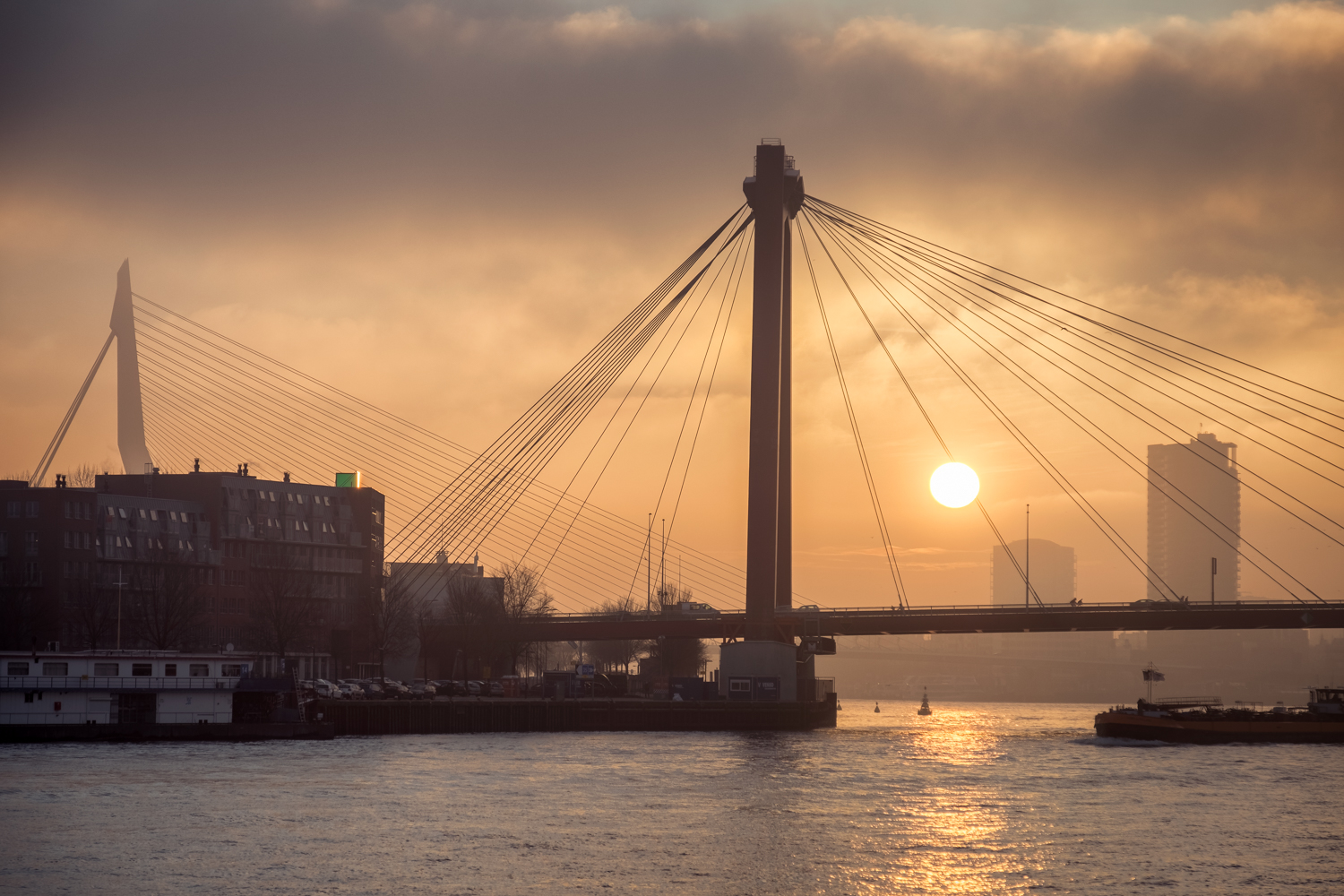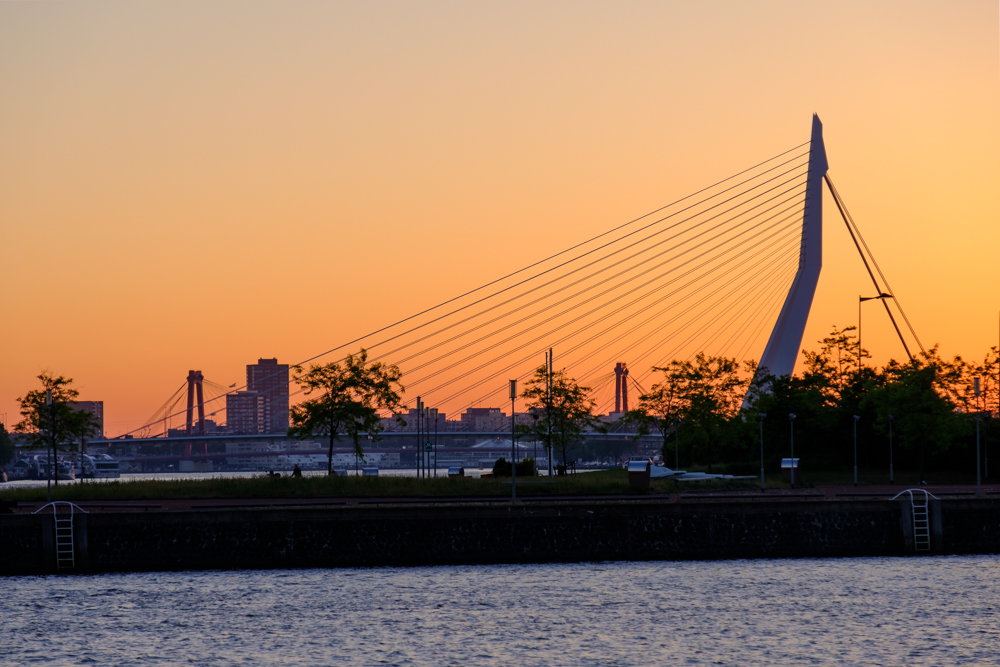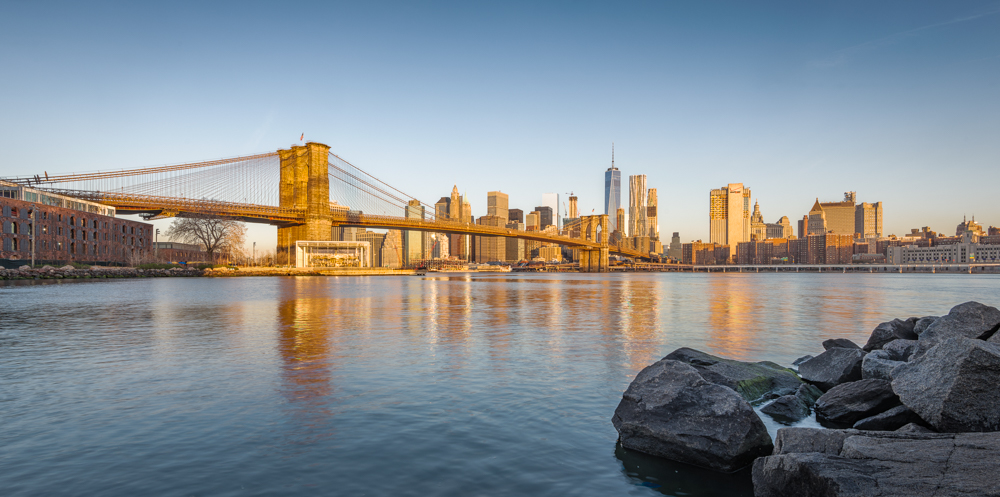Cityscape photos are generally taken when the light in the sky is minimal so that the lights on the buildings can be captured glowing in the sky. This is also called the golden hour. Taking photos during sunrise and sunset catches the sun in a position in the sky where it is prominent, but isn’t overbearing. Here are a few tips on taking cityscape photos during sunrise and sunset.
ADJUST YOUR EXPOSURE
Because the sun is rising or setting as you take your photos, your exposure will change constantly. When it is darker, your camera needs a higher ISO setting if you don’t use a tripod. This can make your images more grainy so we advice you to use a tripod all the time. Also keep an eye on the weather. Sunset or sunrise photography is a little bit more challenging if it is half cloudy. The sun can come and go and for this reason you have to adjust the exposure, based on the amount of light available. Shooting in aperture priority can make this task more easily, because the shutter speed will be changed automatically by the camera if there is more/less light than the previous shot.
PLACING THE SUN
Shooting cityscapes during sunrise and sunset give a photographer several options. Do you want to include the sun or don’t you? How will the sun be framed in your shot? Many photographers may just be interested in the colorful sky associated with the time of day and decide not to include the sun by shooting the buildings directly in front of it. Others, however, may want to position the sun so it is actually in their shot. You can do this by positioning it between buildings, or waiting to take your shot as the sun rises or sets on the tallest building in your city. Whatever your choice, be sure not to look directly into the sun when placing it.
SHOOT WITH HDR PHOTOGRAPHY
As with any scene containing dynamic exposures, you should try shooting High Dynamic Range shots. This is especially important if you can see all or part of the sun in your frame. High Dynamic Range (HDR) photography is a style many cityscape photographers use. It involves using your camera’s auto bracketing exposure setting (or manually changing your exposure). You should snap a picture of the same frame at several different exposures. You can then take those photos and blend them together in post editing so that each part of your shot is perfectly exposed as you want it. Some things to remember with HDR photography: be sure to use a tripod as you will want the exact same frame for each shot so that blending isn’t an issue. You should also remember that moving objects will show up differently in each shot, so keep that in mind when choosing where you will shoot your cityscape. Avoid highways where cars are moving quickly, or areas with strobe lights that change in the matter of seconds. Of course there are other solutions for this like blending the shots in Photoshop, but the HDR post processing technique can fail when objects are moving.
PLAY WITH SILHOUETTES
Silhouettes are easiest to pull off during sunset and sunrise. If you are looking to snap a photo of the darkened city skyline against the colorful, lively horizon, use silhouette. To accomplish this, you will need to set your camera’s exposure to work best with the background of the image, in this case the horizon. If your camera has Active D-Lighting (only in Nikon cameras), turn it off because it will try to force the camera to correctly expose for the subject that is in the shadow, in this case your cityscape. For the best silhouette photographs, make sure the silhouette is recognizable.
PLAY WITH REFLECTIONS
As with any cityscape, reflections of it can be used effectively by finding the best location possible. During sunset or sunrise, you may even be able to catch the sun in the reflection. Play around with including it in your shot. If you don’t feel like it will enhance your picture, don’t include it.
DITCH YOUR FILTERS
Many photographers use filters to make their images pop. However, when photographing during sunset or sunrise, ditch them. Even your polarizing filter. They actually don’t help saturate the colors in your sunset if the sun is also in the photo. Only use the polarizer when the sunlight comes from the side and you want to decrease the amount of reflections. It is important to remember that you can adjust your saturation in post editing.
SHOOT IN RAW
Shooting in RAW file format is especially important in shooting cityscapes during sunrise or sunset. Delicate light information is basically discarded if you shoot in JPEG. Additionally, shooting your cityscape in RAW format allows you to do a lot more during the post editing process.






